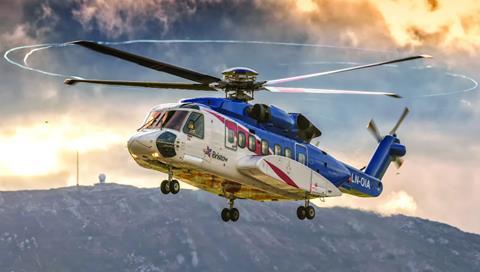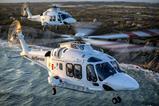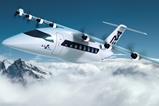Bristow Group sees the spare parts shortages afflicting the Sikorsky S-92 lasting until at least the end of the year and is increasingly looking to other helicopter types for its future capacity requirements.
Oil and gas support specialist Bristow – which has extensive operations in the USA and North Sea region – has been hard hit by the supply chain problems, which have left large numbers of its S-92 fleet unserviceable while awaiting critical parts, notably main gearboxes.

Presenting the company’s full-year 2023 results on 5 March, chief executive Chris Bradshaw said that the issue with the S-92 remained an “acute challenge”.
“We are still seeing very extended delays in the delivery of parts and repairs for the S-92,” he says, seeing the problem as likely to “continue at least through the end of this calendar year”.
Under the ‘Risk Factors’ section of its annual filing to the US Securities and Exchange Commission, Bristow lays out the scale of the problem.
“In particular, we have experienced significant delays in the delivery of parts for our S-92 fleet, which comprises 31% of our total fleet, resulting in the need to purchase or otherwise acquire parts from other sources and to ground multiple S-92 aircraft and forgo certain related business opportunities.”
Sikorsky says it is investing substantial sums to address the weaknesses in its supply chain and sees the situation normalising as the year progresses.
In the meantime, Bristow is increasing its 21-strong fleet of Leonardo Helicopters AW189s, seeing the super-medium-twin as a suitable replacement, with lower operating costs and CO2 emissions, for a large proportion of the missions it performs with the S-92.
At the recent Heli-Expo show in Anaheim, Bristow disclosed a firm commitment for 10 AW189s, plus 10 options, adding to the five examples it already has on order, which will begin arriving this year. Bristow uses the Italian-built helicopters for offshore transport and sear and rescue missions.
Bradshaw says the “strategic fleet upgrade” will allow Bristow to capitalise on the upturn in oil and gas activity, which is driving increased aircraft utilisation and higher rates.
But with lead times at around 24 months for the AW189, the “ability to bring in new capacity is constrained,” he says.
“Bristow’s new framework agreement for AW189 represents a flexible solution to meet customer demand for fleet transition and fleet expansion needs while driving robust [earnings] growth at attractive returns for Bristow stakeholders.”
At Heli-Expo Bristow also revealed a framework agreement with Airbus Helicopters for up to 15 H135 light-twins.
Comprising five firm orders and 10 options, delivery of the first unit is scheduled for October this year.
Additionally, subsidiary Bristow Arabia Aircraft & Maintenance Services and Saudi Arabia’s The Helicopter Company disclosed an agreement at Heli-Expo to work together on advanced air mobility (AAM) initiatives in the Kingdom.
Bristow has tentative agreements for substantial numbers of AAM aircraft from multiple manufacturers, including uncrewed hybrid cargo drones and electric-powered short or vertical take-off aircraft for cargo or passenger transport.
“We think this is going to be an important part of the future of the aviation industry. And we think there’s a role for Bristow to play there as a leader in vertical lift,” says Bradshaw.
Full-year 2023 revenues stood at $1.26 billion with a net loss of $6.2 million, against respective figures of $1.17 billion and $9.2 million profit the previous year. EBITDA was $41 million versus $54 million in 2022.































